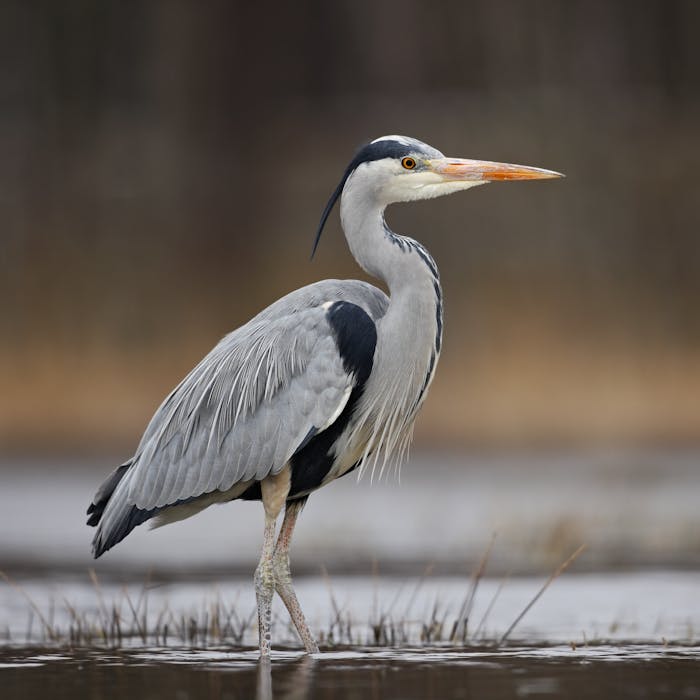
The statuesque Grey Heron
This striking bird is widespread across the UK and likely to be seen by urban and country dwellers alike - usually in its characteristic statue-like pose at the edge of ponds, canals and rivers.
The heron is an easily recognised - there is no common British bird like it. It has a grey backed, long legs, a long, white neck, bright yellow bill and a black eyestripe that continues as long, drooping feathers down the neck. The grey heron flies with its long legs stretched out, but its neck pulled in. Both sexes look similar.
The most common call is a loud, harsh "frarnk", which is often given in flight.
Herons are often seen stood as still as a statue on their long thin legs in shallow waters of ponds and lakes patiently waiting for their next meal to swim by. These tall birds spend most of their time alone feeding mainly on fish but can be tempted by the occasional tasty mole!
When feeling particularly lazy the heron will visit gardens with ponds for a quick and easy snack - much to the dismay of domestic fish keepers. Though primarily a fish eater, it will hunt on land for rodents and frogs.
The heron nests in noisy colonies in tall trees to form a colony or heronry. The nest is a large platform, made from twigs and grass, and built by both male and female birds.
The duties of incubating the eggs are performed by both parents. The eggs are about 60 mm by 43 mm, and pale greenish-blue. Both adults feed the young birds.
British herons are mostly sedentary, but some do migrate to Ireland and the near-continent, such as France and Holland.
In the winter, northern European Grey Herons arrive in eastern Britain, especially along the coast.
Further reading
Links to external websites are not maintained by Bite Sized Britain. They are provided to give users access to additional information. Bite Sized Britain is not responsible for the content of these external websites.
